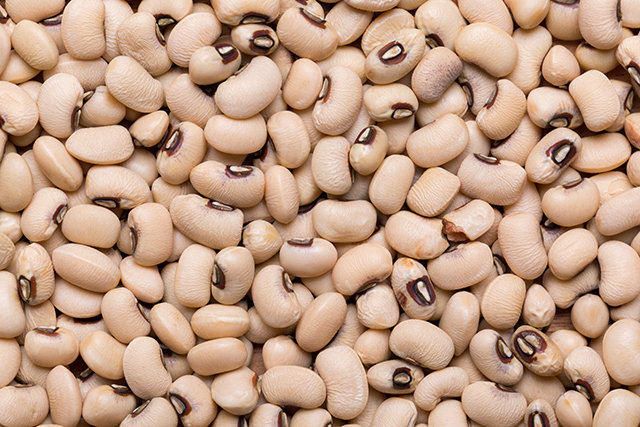 Parler
Parler Gab
Gab
Beans, a survival stockpile staple
White beans, such as butter beans and navy beans, are the best for long-term storage. White beans take only 45 minutes of simmering to cook, compared to 60 minutes or longer for other kinds of beans. The shorter cooking time of white beans is essential in emergencies where fuel conservation matters, especially if your water supply is also running low. While white beans rank number one in the list of the best beans for long-term storage in your stockpile, all beans are good for long-term storage. In fact, when stored properly most beans can last for as long as 25 years or even longer. Ideally, you should store different types of beans so you have a variety of foods to eat when dealing with a long-term survival scenario. Beans are considered a good survival food because they have a very long shelf life. However, dry beans take a longer time to cook. If you plan on stocking up on beans, especially dry beans, you should also stock up on water, along with an emergency stove and extra fuel.Cooking time guide for beans
When choosing which beans to stockpile, you must consider other factors like cooking time. Even pre-soaked beans take a long time to cook. This might not be a problem if you have a wood stove, but you will still need a lot of fuel if you have to cook beans during a power outage. When cooking beans, you should also measure your ingredients so you don't have to worry about leftovers. When it comes to cooking time, white beans are your best choice. Red and yellow lentils are also good options since they also cook rather quickly. (Related: Prepping essentials: 11 Forever foods for your food storage pantry.) Listed below is the simmer time (minutes) of different kinds of beans:- Azuki beans – 45 to 55 minutes
- Anasazi beans – 60 minutes
- Black beans – 60 to 90 minutes
- Black-eyed peas – 60 minutes
- Cannellini beans – 60 minutes
- Fava beans – 40 to 50 minutes
- Garbanzo/Chickpeas – 60 to 120 minutes
- Great northern beans – 45 to 60 minutes
- Green split peas – 45 minutes
- Yellow split peas – 60 to 90 minutes
- Green peas (whole) – 60 to 120 minutes
- Kidney beans – 60 minutes
- Lentils – 45 to 60 minutes
- Lentils (Red or yellow) – 20 to 30 minutes
- Lima beans/butter beans – 45 to 60 minutes
- Mung beans – 60 minutes
- Navy beans – 45 to 60 minutes
- Pinto beans – 60 to 90 minutes
- Soybeans – 60 to 120 minutes
Fat content and nutritional profile of beans
You should also consider the fat content of beans if you want to stock up on them before SHTF. Even when stored in sealed containers with oxygen absorbers, fat will still go rancid over time, especially if you live in a state with hot temperatures. Fortunately, most beans are very low in fat. However, some beans, like chickpeas and soybeans, have higher amounts of fat. If you live in a hot climate, you might want to choose other beans for your survival supply. Here are two healthy beans and legumes to stock up on before disaster strikes: Garbanzo beans/chickpeas Garbanzo beans, also called chickpeas, are full of dietary fiber and protein. One cup (164 grams) of cooked chickpeas contains 269 calories, 14.5 grams of protein, 4.25 grams of fat, 12.5 grams of fiber, and 45 grams of carbohydrates. The same serving also contains:- Folate (vitamin B9) – 71 percent of the Daily Value (DV)
- Copper – 64 percent of the DV
- Manganese – 73 percent of the DV
- Iron – 26 percent of the DV
- Thiamine (vitamin B1) –30 percent of the DV
- Folate (vitamin B9) – 90 percent of the DV
- Copper – 55 percent of the DV
- Iron – 37 percent of the DV
- Zinc – 23 percent of the DV
Are beans expensive?
If you are on a tight prepping budget, stock up on dry beans since they are often very cheap. To save money, choose the cheapest beans. As of writing, these are the cheapest beans and lentils:- Pinto beans
- Black beans
- Brown lentils
- Navy beans
- Red beans
- Garbanzos/chickpeas
More related stories:
Let’s Talk Wellness Now: 10 Natural foods with a long shelf life for your survival stockpile – Brighteon.TV. How to stockpile foods with a long shelf life. Food preservation 101: A step-by-step guide to air-drying fruits. Sources include: PrimalSurvivor.net Healthline.com Brighteon.comDr. Steve Hotze blasts GROOMERS disguised as teachers in the public education system – Brighteon.TV
By Belle Carter // Share
By Arsenio Toledo // Share
Governments continue to obscure COVID-19 vaccine data amid rising concerns over excess deaths
By patricklewis // Share
Tech giant Microsoft backs EXTINCTION with its support of carbon capture programs
By ramontomeydw // Share
Germany to resume arms exports to Israel despite repeated ceasefire violations
By isabelle // Share










